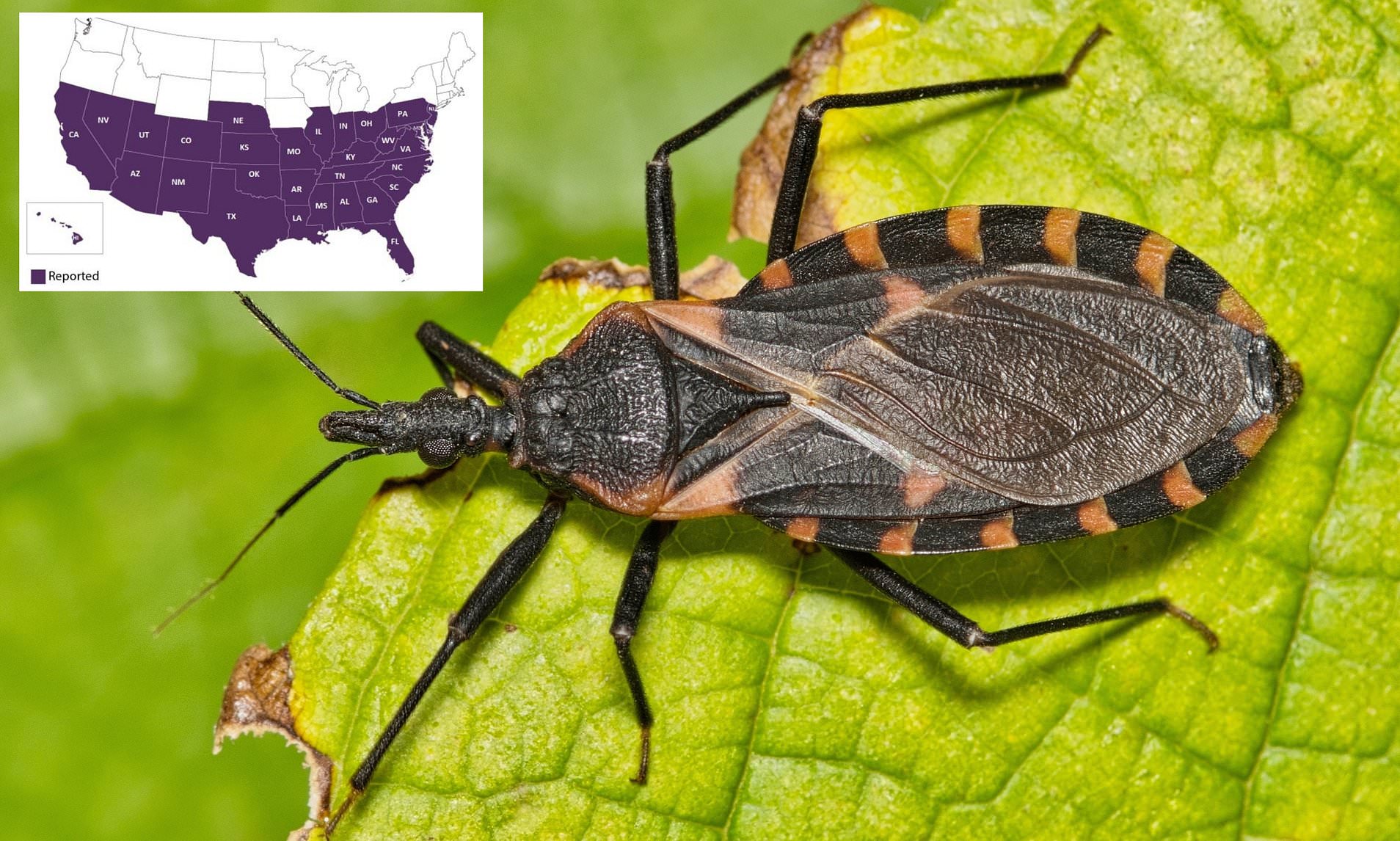The Hidden Threat of Kissing Bugs in the United States
A growing concern is emerging in the southeastern United States, where experts warn that deadly parasites may be spreading through a unique vector. These parasites, specifically Trypanosoma cruzi, are responsible for Chagas disease, a condition that can silently damage the brain and heart over time. Researchers from Florida and Texas have spent a decade studying the transmission of this disease, which is primarily spread by triatomine bugs—commonly known as “kissing bugs.”
Kissing bugs are small, ranging from 0.5 to 1.25 inches long, and are blood-feeding insects that often hide in dark areas of homes during the day, such as ceilings and wall cracks. They emerge at night to feed on humans or animals. This behavior makes them particularly dangerous, as they can transmit Trypanosoma cruzi when their infected feces come into contact with the skin or mucous membranes.
The study, published in PLOS Neglected Tropical Diseases, analyzed 300 kissing bugs collected from 23 Florida counties. More than a third of these bugs were found inside homes, and one in three carried the parasite. Infections were detected in 12 out of the 23 counties examined. This indicates a significant risk of Chagas disease transmission across multiple regions.
Dr. Norman L. Beatty, co-first author of the study and an infectious disease physician at the University of Florida, emphasized the importance of understanding the role of these bugs in spreading the disease. He stated, “We’ve done the groundwork to show that we have a vector in our state that is harboring a parasite, invading homes and feeding on humans and our pets.”
Why Are Kissing Bugs Becoming a Problem?
The presence of kissing bugs in homes is increasing due to urban expansion. As more people build properties on previously undeveloped land, they encroach on the natural habitats of these insects. This leads to a higher likelihood of human and animal exposure to the parasites they carry.
Dr. Samantha Wisely, another study author, explained that the bugs are “ambush predators” that wait for their hosts to relax before feeding. She added, “They wait for you to relax and then suck blood.” This behavior makes them difficult to detect and control.
The researchers believe that the spread of kissing bugs is not limited to rural areas. Instead, it’s occurring in peri-urban settings—areas that are neither fully suburban nor rural. These zones are expanding as population growth demands more housing, leading to increased interaction between humans and the natural environment where the bugs thrive.
Symptoms and Treatment of Chagas Disease
Chagas disease is often referred to as a “silent killer” because many people who contract it may not show symptoms for years. However, initial signs can include fever, fatigue, body aches, headache, rash, and loss of appetite. Once the disease progresses to its chronic phase, it can lead to severe complications such as heart failure, abnormal heart rhythms, difficulty eating, and issues with bowel movements.
Treatment typically involves anti-parasitic medications, along with therapies to manage secondary conditions like heart rhythm disorders. Early detection and treatment are crucial to preventing long-term damage.
Preventing Exposure to Kissing Bugs
Preventing Chagas disease requires a combination of strategies. Dr. Wisely highlighted the importance of habitat management and behavioral changes. She advised, “Don’t keep those wood piles right next to your house. Don’t keep them right next to where your dog sleeps. I think that’s a huge part of it.”
In addition to avoiding wood piles near homes, individuals should consider sealing cracks and gaps in walls, using screens on windows and doors, and keeping pets indoors at night. While pesticides and insecticides can help reduce bug populations, the focus should also be on modifying environments to make them less attractive to these insects.
A Growing Public Health Concern
With kissing bugs now present in 29 states, including Florida, Texas, New Mexico, and Delaware, public health officials are urging residents to remain vigilant. The lack of close tracking of Chagas disease in the U.S. means that many cases may go undetected, making awareness and prevention even more critical.
As research continues, experts hope to develop better strategies for controlling the spread of these bugs and reducing the risk of Chagas disease. For now, the message is clear: staying informed and taking proactive steps can help protect individuals and communities from this hidden threat.







